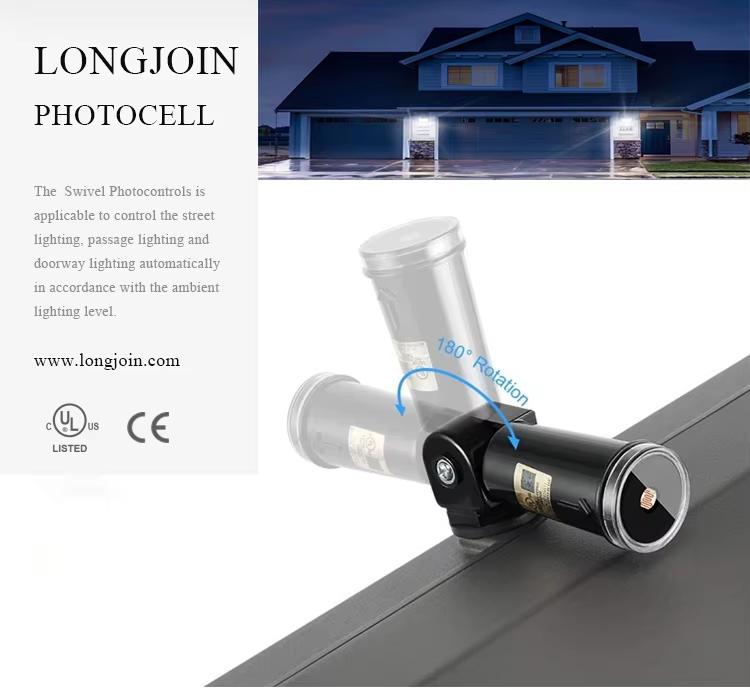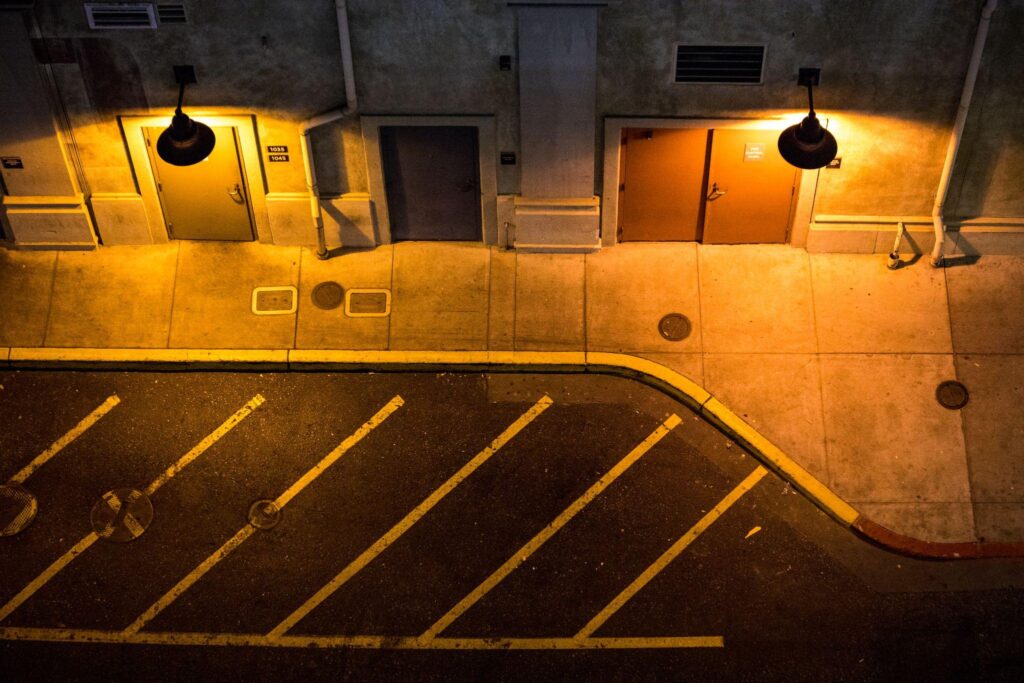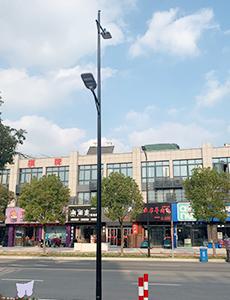مخطط تفصيلي
- مقدمة
- How Are Modular التحكم في الإضاءة Units Transforming Urban Illumination?
- What Exactly Is a Hot-Swappable التحكم في الإضاءة Unit?
- Why Are Hot-Swappable Designs the Future of Smart City Lighting?
- Where Can Modular Lighting Controllers Be Applied?
- Which Long‑Join Models Best Represent the Modular Control Advantage?
- Why Should Cities and Manufacturers Choose Long-Join?
- What Does the Future Hold for Modular Lighting Control?
- الكلمات النهائية
City lighting is changing fast. It’s no longer about turning lamps on and off. It’s about smart sensing, remote monitoring, and efficient energy use.
But how do cities make lighting systems flexible enough to adapt and expand? The answer lies in modular, hot-swappable control units.
These compact devices bring plug-and-play intelligence to every lamp post. They make maintenance faster and integration smoother. As cities grow smarter, modular control units are becoming the backbone of urban illumination.

How Are Modular التحكم في الإضاءة Units Transforming Urban Illumination?
Street lighting has moved beyond simple operation. Modern luminaires now incorporate أجهزة استشعار الخلايا الضوئية and digital controls. This shift turns individual lamps into networked assets.
Remote monitoring lets city operators observe fixture status, dimming levels, and faults in real time. Energy optimization—through adaptive dimming and usage logging—reduces power consumption substantially. Interoperability ensures devices from different vendors plug into a central smart-city platform without custom integration.
Modular controllers enable plug-and-play upgrades of lighting intelligence. They support hot-swapping without full system downtime. These units underpin scalable, future-ready city illumination networks.
What Exactly Is a Hot-Swappable التحكم في الإضاءة Unit?
This compact module plugs into a standard lighting interface. Hot-swappable means it can be removed or replaced while the luminaire stays powered. This feature reduces maintenance time and labor.

These modular units follow global standards like
- كتاب زاغا 18
- نيما ANSI C136.41
These define the mechanical and communication requirements for lighting modules.
Key features:
- Supports remote communication and data collection. Common protocols include
- LTE Cat.1
- واي فاي
- Connects via standardized sockets. This minimizes wiring and simplifies upgrades.
- Built-in logic handles dimming and sensor data processing.
- Modules can be swapped to add features such as motion detection or connectivity—without changing the luminaire body.
Here is a table comparing different communication protocols for photocells.
| بروتوكول | نطاق التردد | Range (m) | معدل البيانات |
| زيجبي | 2.4 جيجاهرتز | 10–100 | 250 kbps |
| لوراوان | 868/915 ميجا هرتز | 2000+ | 50 kbps |
| BLE Mesh | 2.4 جيجاهرتز | 50–100 | 1 ميجابت في الثانية |
| إنترنت الأشياء ضيق النطاق | Cellular | Unlimited | 26 kbps |
Why Are Hot-Swappable Designs the Future of Smart City Lighting?
كفاءة الصيانة
Replacing a مفتاح الخلية الضوئية no longer means shutting down the entire fixture. Modular units allow swap-outs while power remains live. This reduces service crew time and lowers costs for field maintenance. In high-mast or highway installations, the risk and labour of reaching tall poles are reduced significantly.
Enable Flexible System Upgrades
With plug-in smart modules, cities can begin with a basic وحدة تحكم ضوئية and later upgrade to full networked systems. Modules now support multiple protocols, offering immediate cross-communication capability.
This flexibility future-proofs infrastructure to accommodate evolving smart-city platforms. Below is a table discussing power supply types and their suitability for outdoor lighting controls.
| Power Type | Input Voltage | Output Regulation | الأفضل لـ |
| Constant Voltage | 120–277 فولت تيار متردد | Fixed 12/24V DC | LED strips, sensors |
| تيار ثابت | 120–480V AC | 350–1400mA | LED luminaires |
| Dimmable Driver | 0–10V or DALI | Variable | Smart dimming control |
| Isolated Driver | 120–277 فولت تيار متردد | 24 فولت تيار مستمر | وحدات التحكم الذكية |
Globally Compatible
مفاتيح الخلايا الضوئية built for global rollout adhere to standards like NEMA and the Zhaga Consortium Book 18 interface.
These interfaces enable interoperability with major ecosystems such as Signify Interact and Huawei LiteOS. They suit a wide range of fixtures—from solar streetlights to tunnel lighting to high-mast highway installations.
Where Can Modular Lighting Controllers Be Applied?
Urban Road & Expressway Installations
In major thoroughfares, modular controllers handle remote dimming, fault alerts, and energy-use reporting. These systems support adaptive lighting based on traffic patterns and ambient light, improving performance and reducing costs.
Smart Factory Gates & Industrial Zones
أجهزة استشعار الخلايا الضوئية integrate with access-control systems and cameras at factory entrances. They provide lighting when movement is detected, and issue alerts if fixtures fail. The modular design allows rapid replacement without shutting down operations.

Global City Projects
Deployments across different countries benefit from modules that adapt locally—their standards and components. These products enable tailoring with minimal redesign.
Solar-Powered Lighting Systems
In solar systems, modules handle both lighting and battery discharge profiles. They monitor ambient light, battery state, and schedule shutdowns or dimming to extend runtime — ideal for off-grid or remote installations.
Airports & High-Maintenance Zones
In these areas, uptime is critical. Hot-swappable modules allow replacements during live operation. This avoids service interruptions. These areas benefit from modularity to maintain lighting integrity while servicing components.
Which Long‑Join Models Best Represent the Modular Control Advantage?
Long-Join offers a full range of modular lighting control units designed for standardized interfaces. Their Zhaga Book 18 series emphasises future-proof upgradeability.
| نموذج | معيار الواجهة | تواصل | الميزات الرئيسية |
| JL-700 | كتاب زاغا 18 | Zigbee / WiFi | Compact format, cloud-enabled, ideal for European landscape projects. |
| JL-245CG | NEMA ANSI C136.41 (7-pin) | LoRa / NB-IoT | Rugged-duty module with GPS tracking and OTA firmware updates. |
| JL-243 | 5-pin NEMA | Photocell / Standalone | Built-in ambient light compensation and delayed shutdown, tailored for solar applications. |
All modules carry يو ال, م, CB, and ISO certifications. Long-Join facilitates OEM/ODM services, including logo branding and factory-preset parameters—making them ready for large-scale deployment.

How these models align with global smart-lighting trends:
- The JL-700 supports low-voltage, plug-in upgrades in luminaire ecosystems conforming to Zhaga.
- The JL-245CG addresses high-mast, mixed-protocol scenarios common in North America and large infrastructure projects.
- The JL-243 addresses cost-sensitive solar or retrofit installations where intelligent control is needed without full network integration.
Why Should Cities and Manufacturers Choose Long-Join?
Here are the reasons:
- 20+ years of expertise in developing and manufacturing intelligent lighting controllers.
- Certified production facilities complying with international standards.
- Over 30 patented technologies advancing smart lighting control and sensing innovation.
- More than 50% market share across North American smart street-lighting projects.
- Comprehensive system solutions including controller, socket, and housing integration.
- Support customized designs for global smart city deployments.
- Proven reliability through large-scale installations worldwide.
- Compatibility with new IoT and communication standards.
- Flexible supply chain supports fast response to city project needs and bulk orders.
- Trusted by EPC contractors and lighting manufacturers for quality and services.
What Does the Future Hold for Modular Lighting Control?
The future of urban lighting revolves around three core pillars: modular, standardized, and hot-swappable control modules. These pillars aren’t optional extras — they’re becoming the architectural foundation of next-generation smart city lighting infrastructure.
Strategic importance for sustainable urban infrastructure.
Modern cities face escalating demands:
- Lowering carbon footprints
- Enabling IoT services; and
- Reducing maintenance overhead
Modular control units aligned to global standards, easy upgrades, and live replacements. This significantly reduces the total cost of ownership and infrastructure waste.
Key benefits for manufacturers, city planners, and EPC contractors.
● For manufacturers
Standardized modular units mean faster product development, fewer custom parts, and simplified logistics.
● For city planners
infrastructure becomes future-ready — you can start with basic smart nodes and scale to advanced analytics or IoT integrations later.
● For EPC contractors
Installation and maintenance become simpler and less disruptive thanks to hot-swap capability and plug-in modules.
الكلمات النهائية
Smart lighting is moving toward modular and efficient systems. Cities and manufacturers that adopt these technologies will lead the next phase of urban innovation. For dependable solutions, تشي-سوير stands out as a trusted supplier of Long-Join photocontrollers—offering certified quality, proven reliability, and global expertise in intelligent lighting control.
الروابط الخارجية
- https://www.zhagastandard.org/?view=article&id=64:book-18&catid=10
- https://www.nema.org/
- https://en.wikipedia.org/wiki/Zigbee
- https://en.wikipedia.org/wiki/LoRa
- https://en.wikipedia.org/wiki/Narrowband_IoT
- https://www.ul.com/solutions
- https://single-market-economy.ec.europa.eu/single-market/goods/ce-marking_en
- https://www.iso.org/certification.html






